In 1981, director/producer Robert Zemeckis and producer/screenwriter Bob Gale finished the first draft of a movie called Back to the Future for Columbia Pictures. The story was inspired by Gale looking over his father’s high school yearbook and wondering if they would have been friends had they met as teenagers. After Columbia dropped the project, Zemeckis and Gale wrote four new drafts over the next four years, all of which were rejected. The final draft and the involvement of Steven Spielberg as a producer finally resulted in a green light from Universal Pictures, and Back to the Future was released in July, 1985.
The story kicked off when teenager Marty McFly became the first human time traveler on October 26, 1985, and its sequel Back to the Future II featured a journey to October 21, 2015 (which was obviously big news last month when real life finally caught up to the future…) But let’s not forget that Doc Brown actually invented time travel on today’s date, November 5th, back in 1955—the date that Marty travels to on his very first trip in the DeLorean. So why not celebrate with a look at the many references and fun easter eggs that can be found in the original Back to the Future?
Please note, these annotations are listed roughly in the order in which they appear in the movie…
• The film opens on many clocks, similar to the opening sequence of the 1960 film The Time Machine. Just like the machine used in that movie, Doc Brown’s DeLorean has controls decorated in green, yellow and red lights. Another similarity to the machine used in the 1960 film is that Doc Brown’s vehicle can travel through time but not space (except, of course, through the conventional means of driving, as it is a car, and taking into account the Earth is always moving through space).
• A clock in Doc’s home/lab references a scene from the 1923 film Safety Last! starring Harold Lloyd, foreshadowing when Doc (played by Christopher Lloyd) hangs from the clock tower later in this movie.
• Watch the walls: collected newspaper clippings reveal that Emmett Brown’s family mansion burned down on August 1, 1962. This led to Doc selling his estate and moving into the separate garage unit. One part of Doc’s background that isn’t revealed in the newspapers is that, according to Robert Zemeckis and Bob Gale, he worked on the Manhattan Project during the 1940s.
• Doc’s full name is given as Emmett L. Brown. In Back to the Future: The Animated Series, in the episode “Put On Your Thinking Caps, Kids! It’s Time for Mr. Wisdom,” his middle name is said to be Lathrop. According to the novelization of Back to the Future, Emmet Brown is 65-years-old in 1985, making him 35 in 1955. Christopher Lloyd was 46 at the time Back to the Future filmed.
• John Lithgow was offered the role of Doc Brown but turned it down. Christopher Lloyd initially turned it down as well, but reconsidered when his wife insisted it would be a good role. While many compare Doc to Albert Einstein, Christopher Lloyd has said that he was also inspired by conductor Leopold Stokowski. Doc gesticulates while pondering scientific ideas because, according to Lloyd, he is imagining himself “conducting the orchestra of the world.”
• Michael J. Fox’s agent originally turned down the offer to star in Back to the Future because he believed that the rising TV star would not be able to film around his schedule for the TV show Family Ties. Fox later said that this was a reasonable decision. Eric Stoltz was chosen next, but was fired after six weeks of filming when Gale and Zemeckis concluded that he wasn’t right for the role (a belief held by several others in the production). When Fox’s agent was told that Zemeckis was willing to reshoot all of the scenes they’d already filmed with Stoltz, he brought the offer to the actor who then read the script and eagerly accepted the role. Fox filmed many of his scenes during his off-hours from Family Ties, which is why a lot of the movie takes place indoors or at night.
• Marty McFly is 17 years old during the Back to the Future trilogy (all of which takes place for him in just over two weeks). During filming for the first movie, Michael J. Fox was 24 years old. He was 28 when the two sequels were filmed back to back.
• When Michael J. Fox first appears as Marty McFly, he wears the same mirrored sunglasses that he wore in the teaser for Back to the Future. He does not wear them again throughout the trilogy.
• Doc’s amplifier (which informs us that Marty visits often and Doc encourages his music) has a gauge that reads “CRM114.” This is a direct reference to the CRM-114 Discriminator from Stanley Kubrick’s film Dr. Strangelove, which in turn was a nod to a device simply called the CRM 114 in the novel Red Alert, the film’s inspiration. The CRM 114 also inspired the name of an e-mail spam filter and is referenced in A Clockwork Orange, the TV show Heroes, and the TV series Star Trek: Deep Space Nine, as well as other areas of pop culture.
• One early idea for how Doc and Marty met was that the older man offered Marty money and/or free beer if the young man cleaned and organized his home. Gale and Zemeckis decided an origin for the friendship was not important, believing that it is not unusual for teenagers to take an interest in an eccentric neighbor, especially if said person treated them as an equal rather than as a kid.
• A Texaco gas station is featured in both 1985 and 1955. Christopher Lloyd’s grandfather was a founder of the Texaco oil company.
• Strickland offers Marty “a nickel’s worth of free advice.” This phrase was spoken often by a disciplinarian that Bob Gale crossed paths with in school.
• Many of you know that Huey Lewis is the man judging Marty’s band, the Pinheads. But check out the bass player. That’s Michael J. Fox’s guitar instructor Paul Hanson. And Huey Lewis’s line, “You’re too darn loud,” is a criticism he himself got when he was younger.
• Marty meets up with Doc Brown at Twin Pines Mall at 1:16 AM on October 26, 1985. The movie Back to the Future came out on July 3, 1985. So on October 26, between 1 and 1:30 AM, several BTTF fans met on the Southeast parking lot of Puente Hills Mall, the location used to shoot Twin Pines Mall. When asked about it, they said they just wanted to see if anything happened.
• Doc’s time machine is a US DMC-12 model, which can achieve 0-60 mph in 8.8 seconds. For Back to the Future II and Back to the Future III, the production team replaced the engines of their DeLoreans with higher-powered Porsche engines. Part of why the DeLorean was chosen was so that it would be believable that Old Man Peabody would mistake it for a spaceship in 1955, due to its steel body and gull-wing doors.
• The initial script for Back to the Future has Emmet Brown build a “time ray,” which transmits a person through time if they’re inside a “time chamber” and are zapped. In the original script, Brown (called “Prof” rather than “Doc”) attempts to send Marty home by building a makeshift time chamber out of a lead-lined refrigerator and placing it on a nuclear testing site so that the atomic blast charges its time circuits, hurling the teenager back into the future.
• In this movie, the DeLorean is always covered in ice when it emerges from a time trip, at least until the film’s end. The idea was that, for just a moment, it traveled through a vacuum during its journeys (which shouldn’t really cause it to freeze instantly, but people often make that assumption). Since the effect became too difficult, Bob Gale decided that Doc’s later updates, including the highly efficient Mr. Fusion device, altered the nature of how the car moved through time and eliminated the freezing problem.
• Doc tells Marty that the DeLorean needs 1.21 gigawatts to have enough power to tear open a hole in time. A gigawatt (gw) is equal to 1 billion watts and 1 billion Joules per second of energy. A typical power plant may produce 1 to 3 gigawatts.
• As he prepares to embark on a journey through time, Doc jokes about wanting to find out sports scores of the future. In Back to the Future II, Bob Gale and Robert Zemeckis call back to this idea.
• When Marty arrives in 1955, he knocks down one of the twin pines that decorate the entrance of Old Man Peabody’s Twin Pines Ranch. This changes history, causing the future Twin Pines Mall to be named Lone Pine Mall instead. Many of you probably know that already, but did you catch the other joke that happens on the ranch? Old Man Peabody’s son is named Sherman. Both characters are references to the time traveling duo Mr. Peabody and Sherman, who were first introduced on The Rocky and Bullwinkle Show.
• Marty travels to Saturday, November 5, 1955, the day that racial segregation was outlawed on trains and buses in interstate commerce in the U.S.A. By sheer coincidence, it is also the birthday of Bob Gale’s father. Bob Gale checked to make sure that November 5, 1955 was a Saturday so that Marty could reasonably run into his parents during the early day rather than wandering around until they were out of school. A Saturday also made it more realistic that the DeLorean could remain hidden on a construction site until it was brought to Doc’s garage that night. Gale chose November as the month because it wouldn’t be unusual for a school to have a large, formal dance towards the end of the semester.
• Marty meets Lou, the owner/bartender of Lou’s Cafe. In the 1955 award-winning film Marty, there is a bartender named Lou and a schoolteacher named Clara. In Back to the Future III, Doc and Marty meet schoolteacher Clara Clayton.
• When Marty arrives in Hill Valley, he passes by a movie theater showing Cattle Queen of Montana, starring Barbara Stanwyck and Ronald Reagan. Later, Doc mocks the idea that Ronald Reagan would be president. In his 1986 State of the Union Address, President Reagan referenced this film, saying, “As they said in the film Back to the Future: where we’re going, we don’t need roads!” President Reagan was also offered the role of the Mayor of 1885 Hill Valley in Back to the Future III but declined the role.
• When Marty meets Lorraine in the school hallway, she’s holding For Whom the Bell Tolls, which calls back to the repeated use of alarm clocks in this film and foreshadows Doc’s encounter with the clock tower bell.
• George says he can’t go to the dance because he’ll miss Science Fiction Theatre. This was an anthology TV series that aired on Saturday nights from 1955 to 1957, featuring speculative fiction. In its syndication run, it was also known as Beyond the Limits.
• Ripping off The Honeymooners episode seen earlier at Loraine’s house, Marty pretends to be an alien to freak out George McFly. This inspired Universal Studios head Sid Sheinberg to write a memo to director Robert Zemeckis, suggested the movie title be changed to Spaceman from Pluto, arguing that people wouldn’t see a movie with the word “future” in its title. Steven Spielberg then wrote back, thanking Sheinberg for his hilarious joke memo with its preposterous title. Embarrassed, Sheinberg let the matter drop. But if you noticed, the mock-up comic book Sherman Peabody holds during the Twin Pines Ranch scene features a story called “Space Zombies from Pluto.”
• See that issue of Fantastic Story Magazine on George’s bed? That’s not a mock-up. It’s an actual issue of the magazine found by one of the prop men, who noticed the robot on its cover resembled Marty in his rad suit. Another thing to notice in this scene is how Marty’s hairdryer changes position, due to a moment being removed where he wielded it as if it were a weapon.
• The morning after Marty pretends to be an alien, he runs into George at the gas station and asks where he’s been. George remarks, “I overslept.” In a deleted segment of the previous scene, Marty used chloroform on George before leaving the guy’s bedroom and then wondered if he’d used too much.
• For the skateboard scenes outside of Lou’s Cafe (which is Lou’s Aerobic Center in 1985), choreography was handled by a young Tony Hawk, who was recruited when Zemeckis saw him and Per Welinder (Michael J. Fox’s stunt double) skateboarding by the beach.
• No one actually knows who made the very first skateboard. Betty Magnuson, an American WAC, mentioned seeing French children playing with boards with attached roller skate wheels in 1944. It’s widely believed that skateboarding started in California in the late 1940s and early 1950s, but it still wouldn’t be widespread until years later, so it makes sense that the kids of Hill Valley have never seen one before.
• After this film was released in Australia, Fox aired a public service announcement (at the request of the Australian government) informing kids that it was dangerous to skateboard while holding onto a moving vehicle.
• At the Enchantment Under the Sea dance, Marty sings “Johnny B. Goode” and evidently inspires Chuck Berry, its writer. According to Berry, he wrote the song while on tour in New Orleans in 1958, referencing parts of his own life and that he was born on Goode Avenue in St. Louis. It wouldn’t be totally out of character for Berry to borrow the song for himself after hearing Marty play it, as he sometimes copied from other artists. The opening of “Johnny B. Goode” is taken from the opening solo “Ain’t That Just Like a Woman” by Louis Jordan in 1945 and the guitar break is from a 1950 T-Bone Walker song called “Strollin’ With Bones.” Chuck Berry also featured the character of Johnny B. Goode in his songs “Bye Bye Johnny,” “Go Go Go,” and “Johnny B. Blues.”
• Zemeckis wanted to cut Marty’s performance of “Johnny B. Goode” because it didn’t advance the story and slowed down the pace of the film. He relented when test audiences loved the scene.
• Some fans argue that Marty playing “Johnny B. Goode” by Chuck Berry and thus apparently giving the song to Berry in the first place is an example of a causal loop, also known as a predestination paradox or “bootstrap paradox,” wherein a person, object or event has no independent origin outside of causing itself through time travel. That, however, seems to go against the rest of Back to the Future‘s time travel rules, where we see that travelers to the past do alter history rather than fill roles that were waiting for them the whole time. So maybe Marty is once again changing history, simply saving Chuck Berry the trouble of writing a song he would have written anyway. Or maybe Berry couldn’t really hear the song all that well over the 1955 model telephone and forgot all about it by the time he wrote “Johnny B. Goode” himself three years later.
• During the clock tower scene when Marty attempts to warn Doc about the future, the wind machine used was so powerful that Michael J. Fox was forced to shout his lines at the top of his lungs; after several takes, he wound up coughing up blood.
• While Doc is hanging from the clock tower, he accidentally breaks off a piece of the ledge. That ledge was intact when we saw it in 1985 at the beginning of the film. When Marty returns to 1985, the break Doc caused will still be there.
• When Marty leaves 1955, his fire trails lead to a movie theater featuring The Atomic Kid. This is a 1954 movie starring Mickey Rooney that takes place on an atomic test site. The movie references earlier drafts where the time machine had to be powered by an atomic blast and the title is a nice nod to the fact that teenage Marty just vanished in a nuclear-powered car.
• Marty wakes up in his bed and, at first, believes that his time travel adventures were all a dream. This harkens back to A Christmas Carol, the first published time travel book, where Scrooge’s adventures all occur in one night and it’s not explicitly clear if they actually took place or he dreamed it all. It also echoes many time travel stories where the main character travels via dreams or mental projection.
• As he leaves his bedroom, Marty is carrying an envelope. In a deleted segment of the film, Marty puts his demo tape in there, the one his girlfriend Jennifer told him to mail to a record company, but then throws it in the trash on his way to meet Doc at the mall. After returning from the past and parting ways with Doc, Marty retrieves the envelope from the trash, leading up to this morning when he intends to take a risk and mail it. It’s a shame these segments were deleted, as they show that Marty growing through his experiences with young George McFly, now taking the advice that Doc, Jennifer and he himself gave.
• Thanks to Marty’s alteration of the timeline, many things about his family have changed. George never gave up on his writing and publishes his first novel in 1985, entitled A Match Made in Space. In Back to the Future II, check out the USA Today newspaper that Doc shows Marty. According to it, Hollywood is planning a remake of the movie to be directed by Robert Zemeckis, since the 1989 original movie adaptation was “a creative misfire as well as a box office bomb.”
• Two things always confuse me during the end of this movie: 1, why is the truck parked in such an awkward way? 2, why is Biff treated as a loveable loser when thirty years ago he attempted to rape Lorraine? Did George and Lorraine just decide to forgive and forget? It’s just odd, people.
• Jennifer arrives and you might notice that, once again, she and Marty are interrupted before they can actually kiss. Those poor teens. They will not actually kiss in the entire trilogy until towards the end of Back to the Future III.
• When Doc Brown arrives from 2015, he is wearing a shirt decorated by Japanese characters, created to indicate a greater influence of Japanese culture in the future. When asked why Doc Brown would also wear a transparent neck tie, Bob Gale responded “What’s the point of wearing a tie when you can see it?”
• The DeLorean’s “OUTATIME” license plate now instead displays a bar code, indicating that cars are identified by different means in 2015 (or possibly a later date in the future, since there’s no telling how many time travel trips Doc has made by this point and how far he’s gone).
• Bob Gale and Robert Zemeckis didn’t intend to make a sequel. In subsequent interviews, Gale stated that if they’d known there would be a second film, Jennifer Parker would never have joined Marty and Doc in the car during the closing scene of Back to the Future. This is why she spends most of the next two movies unconscious—they seriously didn’t know what to do with her character.
• In the theatrical release and the later DVD release, the credits immediately appear when the time machines flies at the screen. The title card reading “To Be Continued…” was added to the Back to the Future VHS release because at that point Universal had already greenlit a sequel and they wanted to get audiences interested. Originally, there was only going to be one sequel, but a third one was rushed into production when Michael J. Fox announced he was leaving Family Ties and would be focusing more on his film career.
That about does it, folks. Everyone has their own idea of what should be mentioned in a “complete” trivia list, so feel free to share your own notes in the comments below!
Alan Sizzler Kistler (@SizzlerKistler) is an actor and freelance writer, as well as the author of the New York Times Best Seller Doctor Who: A History. He is the creator and host of the podcast Crazy Sexy Geeks.










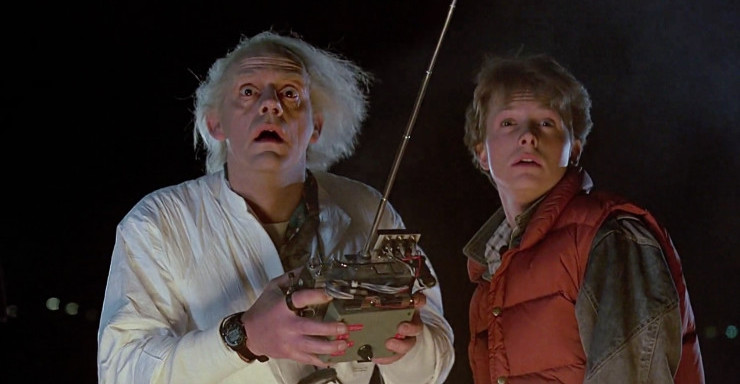
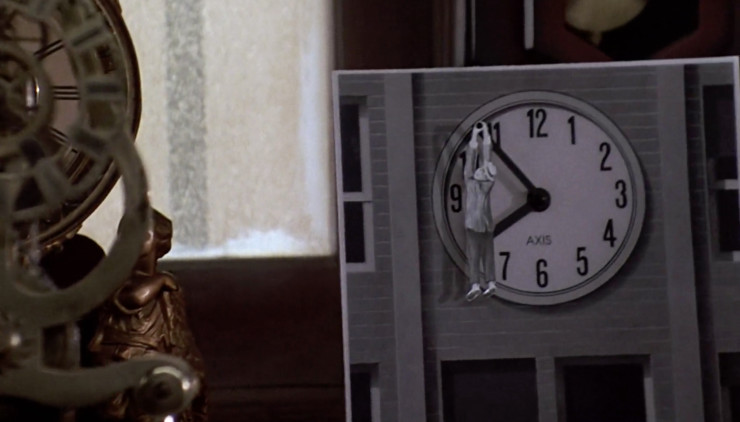
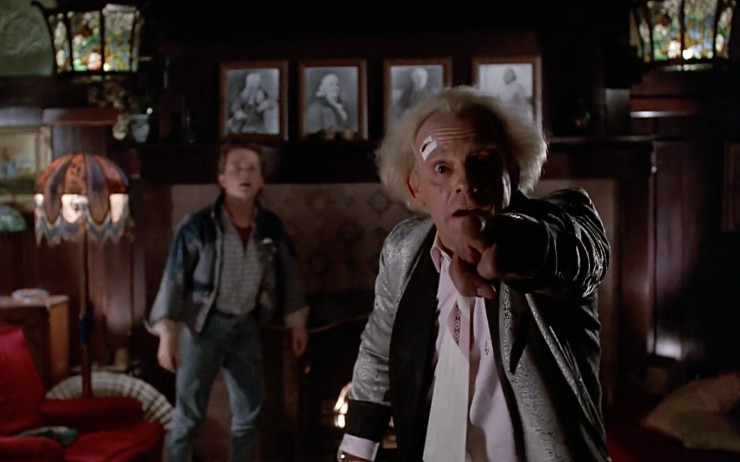
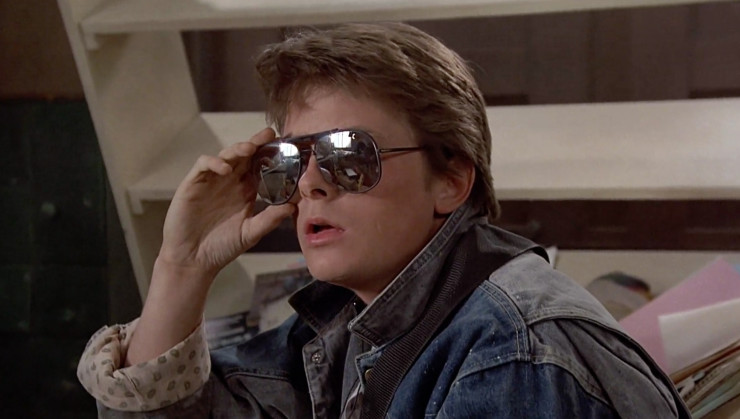

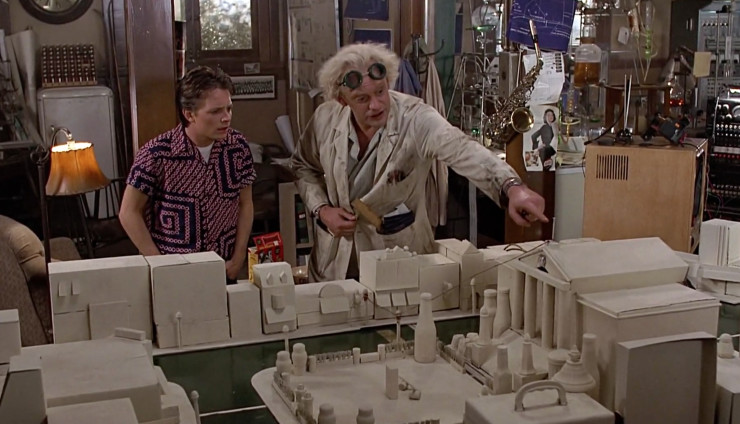
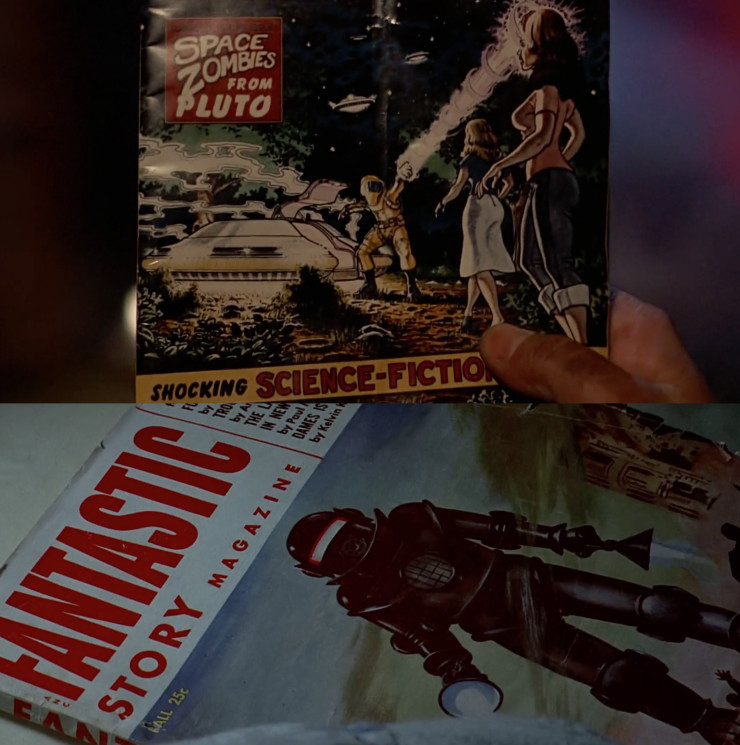
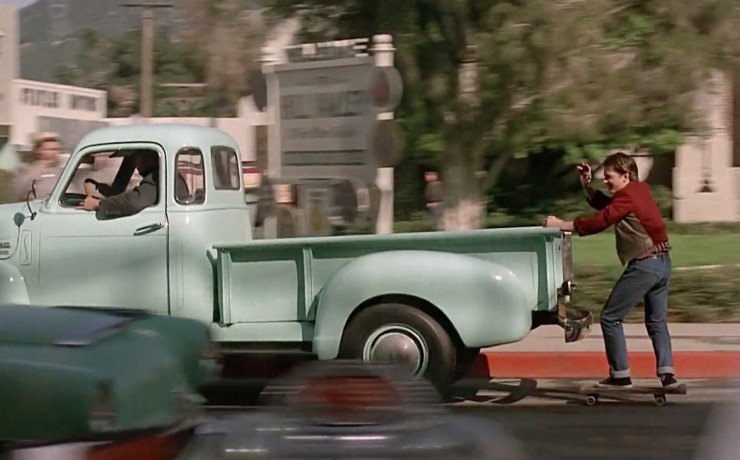

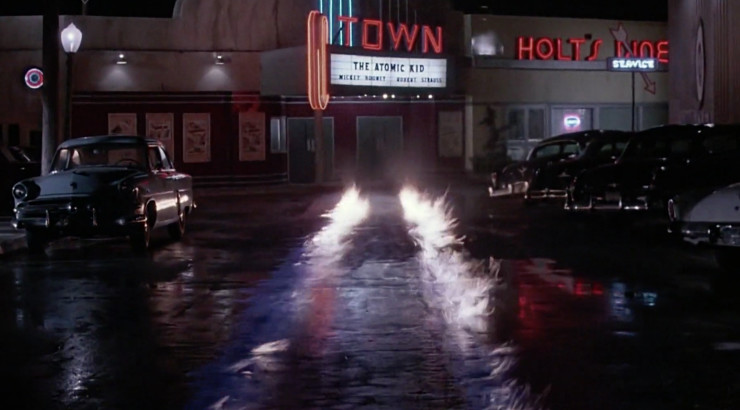
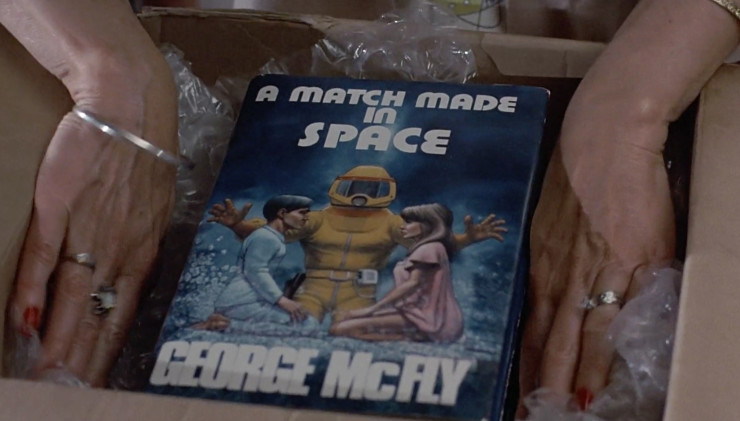
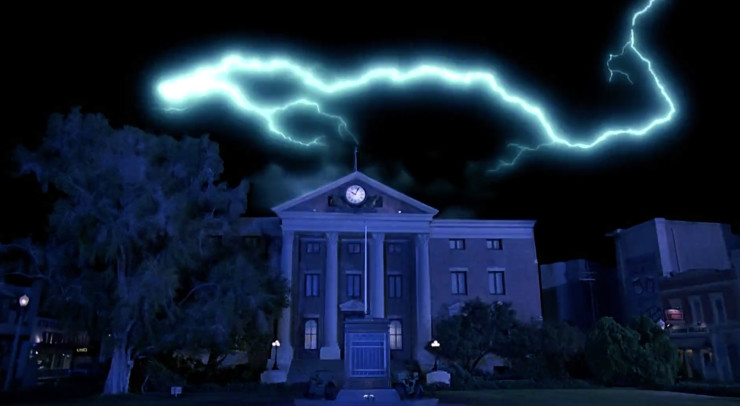
This idea would be revisited in Indiana Jones and the Kingdom of the Crystal Skull, causing movie audiences to be hurled back in time, believing that their memories of a fourth Indiana Jones movie were all a horrible nightmare.
Re “November 5:” In the movie TIME AFTER TIME, when Jack the Ripper escapes from 1898 in H.G. Wells’s time machine, he ends up in San Francisco on…November 5, 1979.
The time machine is, in fact, traveling through space, because the Earth is constantly moving. If the Delorean didn’t move to the Earth’s new location, it’d end up floating in outer space. This is, for me, one of the most annoying conceits of time travel stories, the unthinking assumption of a geocentric universe where the Earth is a fixed object. They never bother to explain how the time machine stays anchored to the Earth as it rotates, as it orbits the Sun, as the Sun orbits the center of the galaxy, etc.
I also get tired of people making the totally backward assumption that vacuum causes things to freeze instantly. Don’t they have thermoses? Vacuum is an insulator! Astronauts and spaceships need cooling systems to avoid overheating, because in the vacuum of space there’s no atmosphere to draw heat away by conduction or convection. They can only lose heat by radiation, the least efficient of the three processes. This is why the Space Shuttle orbited with its doors open — so the heat radiators inside the doors could cool the ship.
I always figured the Delorean’s freezing had something to do with conservation of energy during time travel. In order for a mass to appear out of nowhere in the past, it would need to draw energy from the environment to balance that out. Of course, the mass of a car would correspond to the equivalent energy of thousands of nuclear bombs, so it doesn’t really add up, but I figured it was paying lip service to the idea, at least.
Christopher Lloyd consistently mispronounced “gigawatt,” which should be said with a hard G at the beginning. I’ve seen a number of written works that assumed he was saying “jigowatts,” including the otherwise quite incisive series of analyses that Michael Wolff wrote for Starlog back in the day.
As for the reaction to Biff’s rape attempt… In the ’50s, rape wasn’t generally understood by society (or at least by men) as a serious crime, and was seen more as just an extremely crass imposition by a man who couldn’t control his otherwise understandable desires. In some contexts it was even treated as normative, boys-will-be-boys behavior. There were countless cartoons and jokes about bosses chasing their secretaries around the office. In the original novel of M*A*S*H, Trapper John earned that nickname because he liked to trap women in train restrooms and have his way with them — and he was one of the heroes. So Biff’s attempted assault would probably have been seen as just one more example of his general bullying behavior. No doubt Lorraine would’ve had more animosity toward Biff if he’d actually succeeded, but George stopped him before he really got anywhere.
Gale and Zemeckis decided an origin for the friendship was not important, believing that that it is not unusual for teenagers to take an interest in an eccentric neighbor, especially if said person treated them as an equal rather than as a kid.
Interestingly, the recently released first issue of the Back to the Future comic (which I reviewed here) provides an “official” origin story for Doc and Marty’s friendship – but I agree with the creators’ original assessment. It doesn’t really need an explanation. Is it that hard to believe a teen and a senior citizen could be friends? Sad, if true.
@4/Mike: My own conjecture for how Doc and Marty met was that Marty was skateboarding by Doc’s place one day when some experiment blew up and Marty ran in and saved Doc’s life. So after that, he started checking up on Doc regularly and helping out at his place, just to make sure he didn’t get himself killed. I’m curious how the comic tells the story.
Great write-up! A lot of these were new to me!
I can’t remember if I and a friend came up with this idea or if I’d heard the conjecture elsewhere, but I’d wondered if Marty had become friends with Doc because he’d heard that he had an awesome amp. Maybe it initially had been Marty doing occasional chores for Doc in exchange for use of the amp (apparently supervised, given what happens when Marty uses it on his own), then developed into a real friendship. In fact, I sort of feel like their relationship changes over the course of the movie — early on, Marty seems to react to Doc like he’s his buddy, but also sort of a crazy guy that he’s not entirely sure he can trust. By the end, I feel like their friendship has reached a new level of trust and comaraderie.
–Andy
Or Doc Brown knew he would become friends with Marty, so he figured out a way to become his friend in order to fulfill what he knew would happen in the future.
If you look at Doc Brown’s face, he obviously chooses the original time travel coordinates with a special intention – to send Marty back in time to have his adventure.
@7/QuantumSam: I don’t think that works, because the film uses an altered-history model rather than a time-loop model. The timeline that resulted from Marty’s time travel is substantially different from the original — Lone Pine instead of Twin Pines, his father a successful author, Biff submissive instead of bullying, etc. So the original version of 1985 (the one Marty left) has to be the result of a timeline where Marty didn’t go back in time already.
Doc entered November 5, 1955 as an example. He was typing in various significant dates from history, and entered that one because it was the date he conceived of the flux capacitor. Then they got interrupted by the Libyans and Marty ended up going back by accident, with the machine happening to be set for that date.
Actually, he just comments that he will get to find out who wins the next 25 World Series. Doc’s just curious to find out what happens because he’s a baseball fan. As a pure scientist, the idea probably didn’t occur to him until Marty thought of it.
That text probably is only in the copies that came out a couple of weeks ago in the real USA Today. The stuff below the fold was made this year to fill out the original prop. That article also mentions Zemekis directing “The Walk,” which would have been ridiculously prescient.
@5/Christopher: According to the comic, Marty meets Doc when he’s trying to steal some thingamajig for an electric guitar amplifier, so it’s close to what @6/Andy says, but not exactly (since, y’know, Marty is breaking and entering). I’m still really surprised so many people have spent time wondering how they became friends – it just never struck me as unusual or needing explanation. Always interesting what strikes people about a story!
Only because I just spent the past several days watching all three movies (with commentaries, extras, etc…I’m like that), there are a few things I’d like to amend/correct:
“The final draft and the involvement of Steven Spielberg as a producer finally resulted in a green light from Universal Pictures, and Back to the Future was released in July, 1985.” Both Zemekis and Spielberg have stated that Spielberg was *very* interested in the movie in the early drafts, and was willing to produce, but as Zemekis and Gale’s first attempts were box office flops, all three felt that getting Spielberg involved would actually be a detriment. It wasn’t the fourth draft that did it, it was the success of Romancing the Stone, that brought in Spielberg and Universal.
“George says he can’t go to the dance because he’ll miss Science Fiction Theatre. This was an anthology TV series that aired on Saturday nights from 1955 to 1957, featuring speculative fiction. In its syndication run, it was also known as Beyond the Limits.” When MJF was starting off, there was an established actor already named Michael Fox, so he inserted the J in his name. The show that Michael Fox starred in? Science Fiction Theater.
“Originally, there was only going to be one sequel, but a third one was rushed into production when Michael J. Fox announced he was leaving Family Ties and would be focusing more on his film career.” Per multiple sources in the extras on bluray versions of BTTF2 and BTTF3, the original scripts was actually one film, but was seen as so cumbersome and convoluted that it was split into two separate scripts. They did the overlapping filming for economic reasons, since the scenes overlapped, and letting too much time pass would have aged the characters in an uncharacteristic way.
@12/wurdnurd: Science Fiction Theater was an anthology, so its only “star” was its host, Truman Bradley. But Michael Fox was one of the actors who appeared the most often in the show, tied with Marshall Thompson for 7 appearances each. But Fox appeared in guest roles in countless different series and movies in the ’50s through the ’90s. (Well, not countless…)
@@.-@ Until the 1840s, it seems, rape in English law was punishable by death. By the 1950s the punishment had been reduced to life imprisonment.
California law may have been different, but that does not look to me like a punishment for a crime that was not seen as serious.
https://en.wikipedia.org/wiki/Rape_in_English_law#History
@14/ad: I’ll rephrase: A lot of things that we recognize as rape today were not understood to be rape in the ’50s or ’60s. For instance, it was assumed that it was impossible for a husband to rape his wife. (There are still some subcultures in America today who believe that.) The concept of date rape or acquaintance rape didn’t really emerge until the 1970s-80s. In 1955, a boy getting sexually aggressive with his date would be seen as a “masher” or a “wolf.” People at the time assumed that “rape” referred to a sexual assault by a stranger. Of course the concept of rape existed then, but it was defined far more narrowly.
@3/ChristopherLBennett:
Might I suggest gravity and inertia, the physical principles that anchor you to Earth’s locality as you travel into the future one second per second? (Or more slowly, under certain conditions of acceleration and gravity.) That’s the simpler explanation, and the one I prefer. As I see it, “you jump from one point in time to another, and stuff has moved around you” presupposes (a) a Newtonian absolute reference frame, and (b) a separation of time and space. In the Einsteinian view, if there’s any frame at all, it’s the curvature of space-time, and it seems reasonable that your time traveler is somehow in continuous contact with that curvature, even if the VFX isn’t explicitly “world becomes ghostly and flickers around you” as in the 2002 version of The Time Machine.
OTOH, we already know BTTF’s cosmology isn’t ours, since it has that meta-time during which historical changes dramatically creep up on protagonists. So “simpler explanation” might be the wrong tack here. :)
It’s a science fantasy. IMHO, there’s no need for any explanation beyond establishing the rules of the story — to which end, Doc excitedly exposits that the car runs on plutonium (hence terrorists), electricity (hence lightning), a stainless steel exterior (hence a DeLorean), and that changing history can unmake you (hence Marty’s crazed matchmaking efforts). But if it’s appendices you want, I can suggest the late Robert L. Forward’s Timemaster (1992).
FWIW, in Diane Duane’s Young Wizards series of books, translocation does require that the spell compensate for the hierarchy of motions from planetary to supergalactic. Fortunately human wizards have the Manual, which can act like a spreadsheet or Wolfram Alpha, to help with the math and lookups (or when bringing a bubble of breathing air with you, or when building chemical reactions to dissolve old naval mines, etc.).
@16/phillip_thorne: I’ve heard the “inertia” rationalization before, and I implicitly ruled it out in my above comments by pointing out that the Earth’s motion is not linear but is a series of nested orbits — accelerated motions on complex paths. Nothing can “coast” along with a motion like that. If a time machine retained the momentum it started with, it’d travel in a straight line on a tangent to the planet’s rotation or revolution, flying straight out into space.
And I read Timemaster quite a few years ago, thank you. I’m also the author of the Star Trek: Department of Temporal Investigations book series, so I’ve done a lot of research and thinking on the subject of time travel over the past few years in particular. In my DTI books, I’ve rationalized the “stay in the same place” trope by evoking quantum entanglement — i.e. assuming that the time warp isn’t anchored to a particular location in space, but rather to a particular set of particles, such as those that make up a space station or a portion of a planet’s surface.
So yeah, there are ways the conceit can be rationalized. That doesn’t mean I’m not entitled to find it a lazy and annoying cliche.
As for “they never bother to explain,” I was explicitly referring to all time travel stories that use the trope, not just Back to the Future. Which was the whole point of the word “never” in that sentence.
I’m also a big fan of the Young Wizards series. Leave it to Diane Duane to get it right where so many others drop the ball.
Am I the only one who wants to see the scenes with the young characters now 30 yrs older shot again with present day MJF and Crispin Glover and the rest of the cast? Everyone is still alive! It would be crazy town awesome!
I remember how amused I was by reviewers who described the second movies’ perfectly conventional timeline split paradox as ‘confusing’.